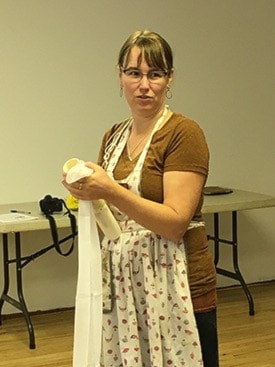Barbara Latkowski
Caledonia Courier
From Sept.10-11, the Arts Council of Fort St. James invited the community to a fun filled workshop full of colour and yes, mushrooms.
“Dyeing with Mushrooms”, was a weekend workshop taught by Alissa Allen.
Allen, who has been teaching the art full-time for the last four years, travelled from her home in Seattle.
She was thrilled to teach the workshop in Fort St. James.
“I’ve never been out this way. It’s so beautiful and there are so many valuable mushrooms here. It’s incredible,” Allen said.
On Sept. 10, participants ventured off on a guided forage for dye mushrooms along with Allen.
The collection of mushrooms was vast and full of surprises.
Workshop organizer, Kris Cooper was amazed at how many different kinds of mushrooms are available in Fort St. James.
“We collected all of these this morning,” Cooper said as she pointed to a table full of mushrooms of all different sizes and shapes.
“It’s incredible because we even came across a very rare mushroom that has never been documented to be in this area.”
According to Allen, a good start is to learn about mushrooms as you collect them and then you can discover their dye potential or while you wait for them to ferment.
Unlike fungi, lichens take years and sometime decades to grow. For this reason, they should be ethically harvested from area where they have become naturally detached from their growing habitat.
After all mushrooms were collected, the workshop participants were ready to dye silk scarves.
Using mushrooms to dye wool and silk can be as simple as adding mushrooms, fiber and tap water to a pot and bring it to a simmer for about an hour according to Allen.
However, you will have better results if you take the time to experiment with the mushroom and a small amount of the protein fiber you plan to dye.
Adding mordants such as alum and iron and pH modifiers will greatly enhance your results.
And on Sept. 11, Allen offered a five hour dye workshop.
“I love the art and science behind this,” Allen said.
“Bringing both together from nature is truly inspiring.”
